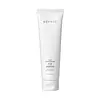What's inside
What's inside
 Key Ingredients
Key Ingredients

 Benefits
Benefits

 Concerns
Concerns

No concerns
 Ingredients Side-by-side
Ingredients Side-by-side

Water
Skin ConditioningPropanediol
SolventPentylene Glycol
Skin ConditioningGlycerin
HumectantSodium Hyaluronate
HumectantHyaluronic Acid
HumectantSodium Benzoate
MaskingCarbomer
Emulsion StabilisingSodium Lactate
BufferingSodium Phytate
Sodium Hydroxide
BufferingTapioca Starch
Butylene Glycol
HumectantPhenoxyethanol
PreservativeCaprylyl Glycol
Emollient1,2-Hexanediol
Skin ConditioningPolysorbate 20
EmulsifyingPalmitoyl Tripeptide-1
Skin ConditioningPalmitoyl Tetrapeptide-7
Skin ConditioningWater, Propanediol, Pentylene Glycol, Glycerin, Sodium Hyaluronate, Hyaluronic Acid, Sodium Benzoate, Carbomer, Sodium Lactate, Sodium Phytate, Sodium Hydroxide, Tapioca Starch, Butylene Glycol, Phenoxyethanol, Caprylyl Glycol, 1,2-Hexanediol, Polysorbate 20, Palmitoyl Tripeptide-1, Palmitoyl Tetrapeptide-7
Water
Skin ConditioningPropanediol
SolventGlycerin
HumectantEthylene/Acrylic Acid Copolymer
Emulsion StabilisingSea Silt Extract
Skin ConditioningPalmitoyl Hexapeptide-52
Skin ConditioningPalmitoyl Heptapeptide-18
Skin ConditioningN-Prolyl Palmitoyl Tripeptide-56 Acetate
Skin ConditioningHydrolyzed Hyaluronic Acid
HumectantAdenosine
Skin ConditioningOlivine Extract
Skin ConditioningTremella Fuciformis Sporocarp Extract
AntioxidantBetaine
HumectantPentylene Glycol
Skin ConditioningCarbomer
Emulsion StabilisingXanthan Gum
EmulsifyingPoloxamer 338
EmulsifyingTocopherol
AntioxidantSodium Citrate
BufferingSilica
AbrasiveMica
Cosmetic ColorantCaprylyl Glycol
EmollientGlyceryl Caprylate
EmollientGlyceryl Undecylenate
EmollientEthylhexylglycerin
Skin ConditioningBenzyl Alcohol
PerfumingPotassium Sorbate
Preservative1,2-Hexanediol
Skin ConditioningLactic Acid/Glycolic Acid Copolymer
Skin ConditioningPolyvinyl Alcohol
Phenoxyethanol
PreservativeSodium Hydroxide
BufferingSodium Metabisulfite
AntioxidantCI 77163
Cosmetic ColorantIron Oxides
Water, Propanediol, Glycerin, Ethylene/Acrylic Acid Copolymer, Sea Silt Extract, Palmitoyl Hexapeptide-52, Palmitoyl Heptapeptide-18, N-Prolyl Palmitoyl Tripeptide-56 Acetate, Hydrolyzed Hyaluronic Acid, Adenosine, Olivine Extract, Tremella Fuciformis Sporocarp Extract, Betaine, Pentylene Glycol, Carbomer, Xanthan Gum, Poloxamer 338, Tocopherol, Sodium Citrate, Silica, Mica, Caprylyl Glycol, Glyceryl Caprylate, Glyceryl Undecylenate, Ethylhexylglycerin, Benzyl Alcohol, Potassium Sorbate, 1,2-Hexanediol, Lactic Acid/Glycolic Acid Copolymer, Polyvinyl Alcohol, Phenoxyethanol, Sodium Hydroxide, Sodium Metabisulfite, CI 77163, Iron Oxides
Ingredients Explained
These ingredients are found in both products.
Ingredients higher up in an ingredient list are typically present in a larger amount.
1,2-Hexanediol is a synthetic liquid and another multi-functional powerhouse.
It is a:
- Humectant, drawing moisture into the skin
- Emollient, helping to soften skin
- Solvent, dispersing and stabilizing formulas
- Preservative booster, enhancing the antimicrobial activity of other preservatives
Caprylyl Glycol is a humectant and emollient, meaning it attracts and preserves moisture.
It is a common ingredient in many products, especially those designed to hydrate skin. The primary benefits are retaining moisture, skin softening, and promoting a healthy skin barrier.
Though Caprylyl Glycol is an alcohol derived from fatty acids, it is not the kind that can dry out skin.
This ingredient is also used as a preservative to extend the life of products. It has slight antimicrobial properties.
Learn more about Caprylyl GlycolCarbomer is a polymer of acrylic acid. Its main role is to create a gel consistency.
A high amount of carbomer can cause pilling or balling up of products. Don't worry, most products contain 1% or less of carbomer.
Glycerin is already naturally found in your skin. It helps moisturize and protect your skin.
A study from 2016 found glycerin to be more effective as a humectant than AHAs and hyaluronic acid.
As a humectant, it helps the skin stay hydrated by pulling moisture to your skin. The low molecular weight of glycerin allows it to pull moisture into the deeper layers of your skin.
Hydrated skin improves your skin barrier; Your skin barrier helps protect against irritants and bacteria.
Glycerin has also been found to have antimicrobial and antiviral properties. Due to these properties, glycerin is often used in wound and burn treatments.
In cosmetics, glycerin is usually derived from plants such as soybean or palm. However, it can also be sourced from animals, such as tallow or animal fat.
This ingredient is organic, colorless, odorless, and non-toxic.
Glycerin is the name for this ingredient in American English. British English uses Glycerol/Glycerine.
Learn more about GlycerinPentylene glycol is typically used within a product to thicken it. It also adds a smooth, soft, and moisturizing feel to the product. It is naturally found in plants such as sugar beets.
The hydrophilic trait of Pentylene Glycol makes it a humectant. As a humectant, Pentylene Glycol helps draw moisture from the air to your skin. This can help keep your skin hydrated.
This property also makes Pentylene Glycol a great texture enhancer. It can also help thicken or stabilize a product.
Pentylene Glycol also acts as a mild preservative and helps to keep a product microbe-free.
Some people may experience mild eye and skin irritation from Pentylene Glycol. We always recommend speaking with a professional about using this ingredient in your routine.
Pentylene Glycol has a low molecular weight and is part of the 1,2-glycol family.
Learn more about Pentylene GlycolPhenoxyethanol is a preservative that has germicide, antimicrobial, and aromatic properties. Studies show that phenoxyethanol can prevent microbial growth. By itself, it has a scent that is similar to that of a rose.
It's often used in formulations along with Caprylyl Glycol to preserve the shelf life of products.
Propanediol is an all-star ingredient. It softens, hydrates, and smooths the skin.
It’s often used to:
Propanediol is not likely to cause sensitivity and considered safe to use. It is derived from corn or petroleum with a clear color and no scent.
Learn more about PropanediolSodium Hydroxide is also known as lye or caustic soda. It is used to adjust the pH of products; many ingredients require a specific pH to be effective.
In small amounts, sodium hydroxide is considered safe to use. However, large amounts may cause chemical burns due to its high alkaline.
Your skin has a natural pH and acid mantle. This acid mantle helps prevent harmful bacteria from breaking through. The acid mantle also helps keep your skin hydrated.
"Alkaline" refers to a high pH level. A low pH level would be considered acidic.
Learn more about Sodium HydroxideWater. It's the most common cosmetic ingredient of all. You'll usually see it at the top of ingredient lists, meaning that it makes up the largest part of the product.
So why is it so popular? Water most often acts as a solvent - this means that it helps dissolve other ingredients into the formulation.
You'll also recognize water as that liquid we all need to stay alive. If you see this, drink a glass of water. Stay hydrated!
Learn more about Water